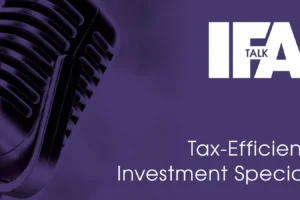The year 2020 determined the forces that will shape the economies and financial markets during the decade ahead. César Pérez Ruiz, CIO & Head of Investments, and Christophe Donay, Head of Asset Allocation & Macro Research at Pictet Wealth Management, provide their thoughts on how 2021 will shape economic and financial parameters as well as how to structure asset allocation.
César Pérez Ruiz, CIO & Head of Investments, Pictet Wealth Management
- Last year saw a steep, rapid decline in the world economy replaced by an unprecedently rapid recovery thanks to massive policy support. At the beginning of last year, we thought we were coming to the end of the economic cycle, but this support has restarted the cycle, meaning we could have 2-3 years of solid growth ahead of us.
- We will see a rebound in earnings growth across the board this year, which will induce a partial rotation towards more value-like stocks. But one will have to be very selective. Significant earnings growth will lead to multiple compression, thus helping lower valuations.
- Equities remain attractive when compared with low bond yields. Yield curve control, explicit or implicit, means we remain underweight government bonds.
- For now, absolute valuations look daunting, but on a relative basis much less so. Economic policy could slant towards fiscal boosts while monetary policy takes more of a back seat. The markets are increasingly pricing in higher inflation, but much less the boost to growth that will come from the fiscal stimulus about to hit economies: with fiscal stimulus and zero interest rates, one can justify price-earnings ratios of 20x. If, on top of that, we have little inflation in the next couple of years, people could become more comfortable about equities.
- As an example of this ‘fiscal dominance’, we expect the Biden administration to launch a huge new stimulus package that will include new cheques for households and be generally positive for cyclical sectors.
- We could well see « the revenge of the losers », with beaten-down consumer discretionary and services sectors recovering fast as they respond to pent-up demand. As fiscal stimulus kicks in, we are turning positive on small- and mid-caps.
- We are also looking forward to a pick-up in M&A given the low cost of debt and improvements in returns on equity. We are starting to see defensive M&A in sectors like banking. Given the rise in corporate events, we think event-driven hedge funds are worth looking at.
- Another example of ‘fiscal dominance’ is the EU’s recovery fund. Much of the new EU money, as well as the money being spent by individual governments, is going into environmental investments; responsible investing and ESG investing are key themes.
- Four of the headline themes I see for the year ahead are: 1) we are in a synchronised recovery that will benefit cyclical stocks; 2) one cannot ignore that the bills for stimulus will fall due at some stage. This means paying special attention to country and sector selection; 3) the ‘revenge of the losers’ means beaten-down sectors are due a comeback, and should be considered as a complement to structural growth stocks in portfolios; and 4) responsible investing is here to stay.
Christophe Donay, Head of Asset Allocation & Macro Research, Pictet Wealth Management
- We expect a global synchronised recovery in 2021, but with some notable differences in the pace of growth. Our central scenario is for Chinese GDP growth to reach 9.3%, compared with 4.3% in the euro area. Our main forecast for GDP growth in the US this year is an above-consensus 4.7%.
- A new stimulus package in the US looks increasingly likely. This could give a boost to growth prospects that one that could be offset by the effects of the flare-up in coronavirus cases. However, we expect more support for households to help improve confidence overall and therefore provide a significant boost to consumer spending.
- We believe that global GDP could be back to pre-covid returns by 3Q 2021, assuming that vaccine roll-outs are smooth and effective and that governments and central banks continue to provide massive support.
- After an unprecendented expansion of their balance sheets, with the injection of USD10 trn into the global economy in the space of a few months, central banks will continue to support the recovery. Importantly, central banks are changing their ‘style’ of policy making. Previously intent on inflation targeting, then on quantitative easing, they have increasingly moved to a style that epouses some elements of Modern Monetary Policy. This means central banks are increasingly involved in financing ballooning government deficits. After the introduction of explicit yield curve control in Japan, we are moving to implicit control of yields in the US and Europe.
- We expect inflation to remain subdued. While the unleashing of pent-up demand could boost core inflation to just below 2% in H1 (provided vaccination campaigns proceed smoothly), we believe there are plently of deflationary forces still at play. We expect the core inflation (core PCE) rate to be 1.4% in the US at end-2021.
- While we expect US-China tensions centred around tech leadership to continue, they may not escalate as both sides prioritise economic recovery.












